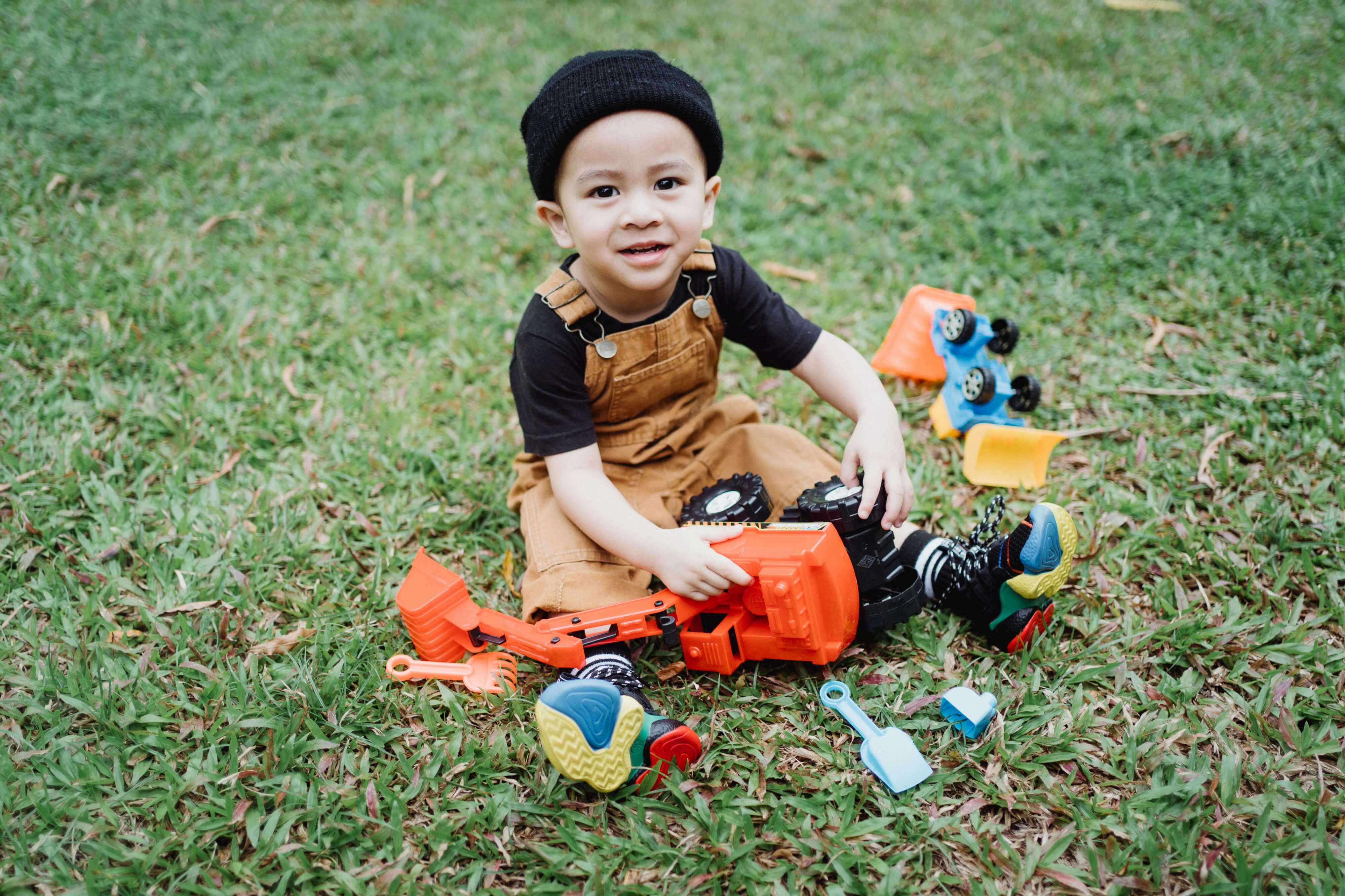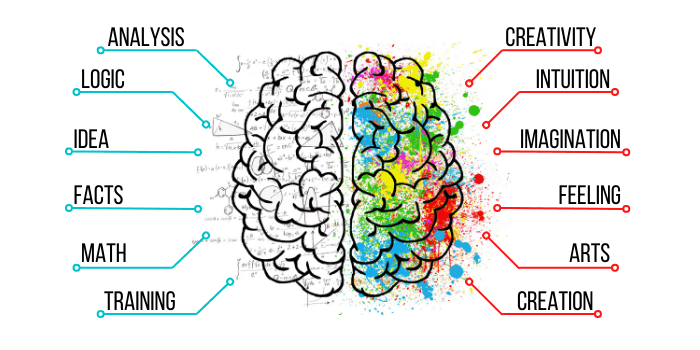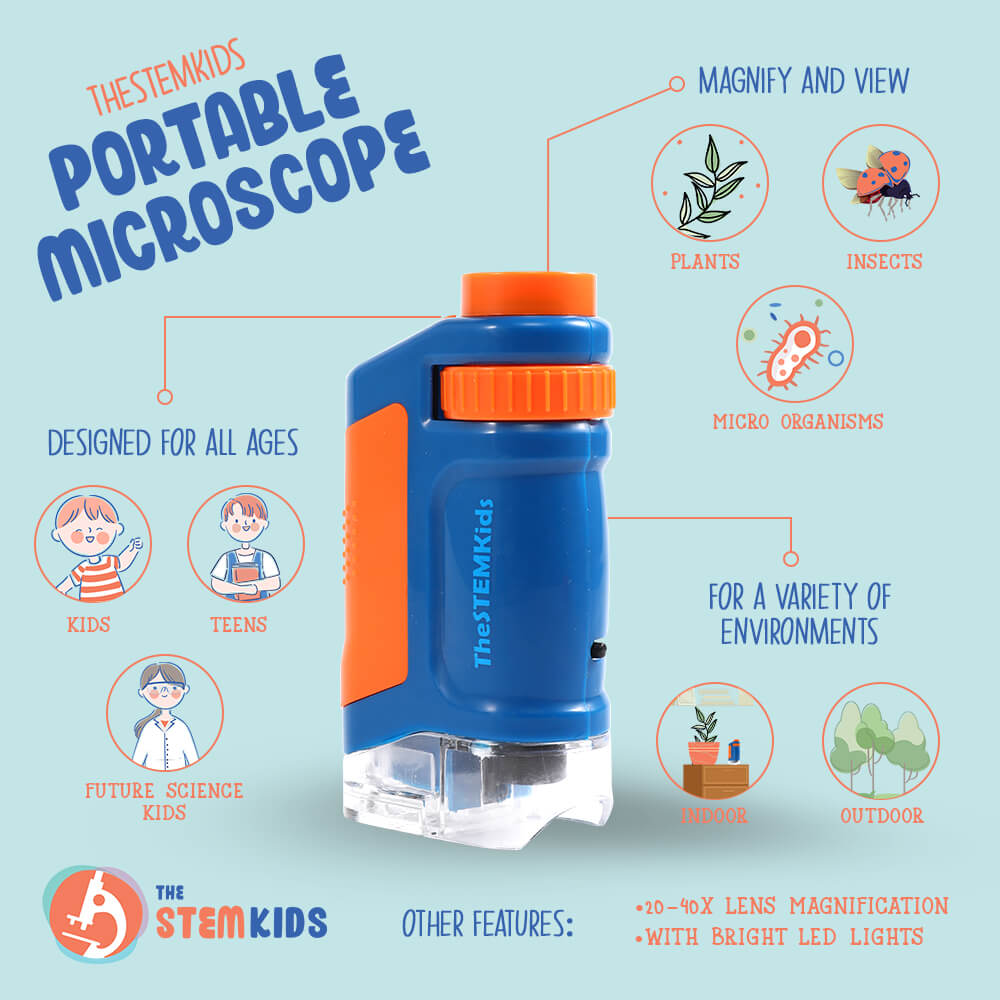When I first started as a parent, I had no idea what toys to get for my then-only child. But as I was doing my research, I came across a classification of playthings called "STEM toys" and found that many parents buy the same class of toys for their kids.
Naturally, I did my research to uncover what these toys are all about:
-
I've read the definition
-
I've seen the benefits
-
I've investigated some good examples
STEM toys are like any other toys except they envelope educational concepts underneath. STEM is an abbreviation for science, technology, engineering, and mathematics, so a STEM toy should convey at least one of these four STEM facets.
But apart from understanding the definition of STEM toys, I never truly understood how to recognize if a STEM toy was good for my child or not. Admittedly, there are tons of STEM toys out there, but what assurance do you have that they're effective for your child?
After years of parenting, only then did I truly realize the factors that make a good STEM toy. And if you're seeking the same answers, keep on reading before you click check-out on that toy in your cart.
You might also be interested: The Ultimate STEM Toys Buying Guide
Brief Overview of A Child's Learning Development

Learning the basics of child development is necessary to understand what makes STEM toys good.
Development refers to the changes in your child's physical, social, emotional, and cognitive skills. And during their first 5 years, this development occurs more rapidly than any other time throughout their lives.
That said, the foundations necessary for their learning, health, and behavior are laid down during these 5 years. So maximizing this stage is a must if you want your child to reap the most benefits from their formative years.
Two primary pillars influence child development:
-
Innate factors
-
Acquired factors
Innate factors are the non-negotiable elements that affect a child's learning development. These are intrinsic in kids, and external influence has little to no effect on these.
Some innate factors include:
-
A child's genetics
-
The hormonal changes in their body
-
A child's sex
-
Maternal nutrition during their mother's pregnancy
On the other hand, acquired factors are the external influences that shape a child's learning development. Essentially this factor deals with a child's environment as they grow.
Some examples include food, nutrition, physical activity, and their community. But two primary things corner the market on acquired factors in a child's learning development: relationships and play.
STEM toys fall under the "play" category.
Relationship of STEM Toys & Child Development

During a child's early years, play is the only way for them to learn and understand how the world works.
Play is a fun activity for kids. But more than the enjoyment they experience are the opportunities that playing paves for children. Play allows kids to do four things:
-
Explore
-
Observe
-
Experiment
-
Solve problems
All of the above helps children better grasp how the world works. And this is crucial for a child's learning development.
If you want to optimize your child's learning in the best possible way. You need toys that enable and empower your child to:
-
Explore their surrounding
-
Observe the causes-and-effects in their environment
-
Conduct age-appropriate experiments; and
-
Solve simple everyday problems
These are the bare minimum checklist required before you purchase a STEM toy.
Unless the toys you intend to buy meet these four parameters, don't click check-out, or else you'll waste your money.
But then, what makes a good STEM toy? Read the necessary attributes below.
Characteristics of A Good STEM Toy

There are two mandatories, and twelve supporting characteristics (a total of 14 features) needed to make a good STEM toy.
The mandatory characteristics are absolute. This means that these two attributes are non-negotiable and must always be present among STEM toys. Otherwise, either absence defeats the core definition of a STEM toy.
Alternately, the supporting characteristics may or may not be present in the toy. However, the STEM toy does diminish in value with each absent feature.
Needless to say, the best kind of STEM toys are those that have all 14 features. And I'll discuss each of them below.
Mandatory Characteristics
1. Promotes STEM

The first defining characteristic of the product is obvious: it should promote STEM or at least an aspect of STEM.
A toy can never be called STEM if it doesn't teach facets of science, technology, engineering, and mathematics or delve into the scientific method.
The scientific method is a process where people investigate facts through experimentation and observation, resulting in the following:
-
Acquisition of new knowledge
-
Solution of a problem
-
Understanding of a concept; or
-
An answer to a question
Before buying a toy, I recommend that you ask yourself this first:
"Will this toy introduce a key facet of STEM or teach scientific investigation to my child?"
If your answer is yes, the toy qualifies in the first mandatory characteristic.
2. Fun and engaging for kids

Do you ever wonder why sometimes your child doesn't play with the toys you purchase? It hurts when kids don't even play with the toys I buy them.
Trust me. I've been there.
But there's one basic product quality to answer this age-old wonderment: is the toy fun and engaging?
Always keep in mind that your child will rarely keep a toy in storage if:
-
The toy is fun
-
It captivates their attention
-
It engages their senses
-
It keeps them entertained
A good STEM toy doesn't need to sing songs or light up like a Christmas tree to be captivating. It's an elusive criterion, but try to answer this question to make things simpler:
"do kids have fun when playing with the toy?"
If yes, then you pass the second mandatory attribute.
The two mandatory characteristics are designed to trigger both the brain's right and left cerebral hemispheres. The left brain deals with logical and factual knowledge about STEM concepts that the toy imparts. While the right brain taps into the STEM toy's fun, engaging, and artistic sides.

Supporting Characteristics
**These supporting or strengthening characteristics culminate thoughts and opinions from the interview of around 2000 parents and over 100 toy association members.
3. Open-ended
The predominant feature of a good STEM toy is being open-ended. This means there is no particular method to play with the toys; instead, the child finds their own manner or style of playing.
(Note: Having no absolute manner of playing doesn't mean there's no goal!)
Open-ended toys offer various pathways or solutions in solving problems, building structures, or using the toy for endless explorations.
4. Relevant to understanding the world
A STEM toy should help children (and parents!) relate the play to their understanding of the real world.
For example, when children play with a toy shape sorter, they understand the relationship of sizes and shapes with the hole — basic principles of geometry.
5. Allows trial-and-error
In an era where success is gratified and failure is scorned, we often forget that children learn the most from their mistakes.
The beauty of STEM is that failing is a welcomed result.
I have not failed. I just found 10,000 ways that won't work. -Thomas Edison
There is a huge payoff when STEM toys encourage kids to fail and retry. The real world doesn't reward risks and shortcomings. But paradoxically, learning to accept failure, moving on, and trying again are the key ingredients for success.
6. Hands-on
Kids learn best when they are actively engaged in the learning journey. This is called experiential learning.
Some researches emphasize the correlation between children using their hands during play and the development of their brains.
When your child plays with tactile and tangible toys, you help develop their 3-dimensional cognitive skills, gross and fine motor skills, and agility compared to online-virtual games. Plus, you also help keep them in their recommended screen times!
7. Lets your child take the lead
This characteristic is closely related to the open-ended aspect. Toys must serve as stepping stones for children to create their fun and lead the play experience.
Children must learn to take the lead when playing, not the toys dictating how kids should play them. Toys should not be mere sources of entertainment. Instead, they should be tools that children use to keep themselves entertained.
For example, a robot that dances when you press a button is bound to lose its value quickly compared to a portable kids' microscope that children can use whenever, wherever.
8. Has a problem-solving element
Play challenges help your child think and figure out solutions to the problem. Such is the importance of a STEM toy's problem-solving element. But in this case, either the STEM toy:
-
Helps solve the problem; or
-
Introduces a problem that the child needs to solve
Either way, problem-solving STEM toys aid children in designing and coming up with workarounds to problems they wish to solve.
Problem-solving skills that kids can learn from STEM toys are transferable to other parts of their daily lives, which they may carry over until maturity.
9. Age-appropriate and curriculum-abiding
All STEM toys are helpful and effective, so long as the difficulty is age-appropriate to the target audience.
You can't expect a three-year-old to understand how a Rubik's cube works. Neither should you give a teenager color stack rings because the concept imparted does not align with their developmental demands.
Including curriculum in a STEM toy enables parents or teachers to direct the play experience towards the desired goal or STEM learning objectives.
10. Gender-neutral and inclusive
STEM opportunities and careers should be more inclusive, and the quest to this end starts with toys.
-
A good STEM toy must be gender-neutral, which means their appropriate for both boys and girls.
-
Toys should also embrace cultural differences as varying perspectives from different cultural descents is critical to solving 21st-century challenges.
-
Toys must cater to children with special needs.
Harnessing inclusivity invites diversity that segments the underrepresented communities in promoting STEM fields.
11. Supports Parents
It was revealed that a parent's affinity, familiarity, or fear of STEM is contagious and transmissible to their children. As a result, parents engaged in STEM are more likely to promote STEM toys while other STEM-intimidated parents usually gatekeep STEM toys.
So a good STEM toy should cater to both young learners and their parents. Some toy companies provide supplementary materials to familiarize parents with STEM and prevent intimidation. At the same time, other toys invite parental involvement in playing with STEM toys.
12. Builds confidence and curiosity
The STEM field is one of the most intimidating academic pursuits for children. So exposing kids to STEM acquaints them to the different STEM facets and builds their confidence in facing challenges related to STEM.
A good STEM toy should also support your child's predisposed nature of curiosity. With the right kind of toys, your kid opens up to their natural calling for exploration, adventure, and love for scientific investigation without fear of risks.
13. Supports creative thinking
Art, creativity, and the humanities are all intrinsic elements of STEM, but some experts like to call it "STEAM." Therefore, toys must exhibit qualities that encourage creativity to be effective.
A good STEM toy cultivates the artist within your budding scientist by letting your child explore out-of-the-box solutions and unorthodox angles for problem-solving.
14. Helps develop social and emotional skills
Today's generation of children suffers from declining emotional intelligence and dipping social skills. But for people to thrive in STEM careers, they need to embrace collaborative efforts in solving this era's problems.
A good STEM toy encourages cooperation and teamwork among children's peers. This quality spurs a child to establish synergistic relationships with their contemporaries and even superiors (parents) in service of their goal.
So what makes a good STEM toy?

A good STEM toy meets most, if not all, of the criteria written above. So before hitting check-out in that online store, first, ask yourself if the 14 characteristics reported at the top manifests in the toy you intend to buy.
Things to remember:
-
If the STEM toy does not meet both mandatory criteria, we highly suggest you steer clear of the toy and search for another.
-
If the STEM toy does not meet all 12 strengthening characteristics, are the insufficiencies still worth it? Do you still see value in the toy despite the inadequacies?
-
If YES, then you may choose to finalize the purchase.
-
If NO, then I recommend you look for another toy instead.
There are so many STEM toys in the market that are highly beneficial for your child. And we have one that you might find useful and effective.
We know a good STEM toy!

If you're looking for a good STEM toy that highlights the explorative, adventurous, and thrill-seeking nature of your child, then the STEMscope kids' microscope might be a good place to start.
Check our STEMscope full review to see what's included in the kit and to read various parents' insights on the product.
You may click our STEMscope product page to learn more or visit our full science gadget catalog to see our other exciting toys!
